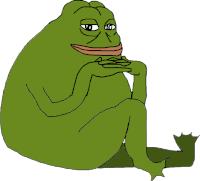Understanding the Groypers Movement

Introduction
The Groypers movement has emerged as a notable group within contemporary political discussions, particularly among younger conservatives in the United States. This faction, known for its provocative online presence, primarily thrives on social media platforms, where they engage in debates surrounding nationalism, identity politics, and cultural conservatism. Understanding the significance of the Groypers is essential not only for grasping the current dynamics within the right-wing landscape but also for recognising their influence on broader societal trends.
The Emergence of Groypers
Originating around 2019, the Groypers began to distinguish themselves from more traditional conservative groups such as Turning Point USA (TPUSA). They gained notoriety for challenging mainstream conservative figures during campus events, often questioning their stances on immigration, race, and representation. The movement is closely associated with host and activist Nick Fuentes, who encourages his followers to embrace a more explicitly nationalist vision of conservatism. Social media platforms, particularly Twitter and YouTube, have been instrumental in the rise of the Groypers, providing a space for their message to resonate with like-minded individuals.
Key Characteristics
Groypers often utilise memes and satirical content to convey their messages, a tactic that has proven effective in engaging younger audiences. This digital strategy not only enhances their visibility but also fosters a sense of community among followers. Additionally, they often critique the ‘establishment’ conservative movement for failing to address issues they deem critical, such as the preservation of Western culture and traditional family values. The Groypers claim to offer a more radical alternative to mainstream conservatism, engaging in discussions that challenge societal norms.
Recent Events and Developments
In recent months, Groypers have made headlines for their participation in various protests and political events, attempting to influence discussions on issues like immigration reform and education policy. Their efforts have raised questions about the future of conservative politics in the US, particularly as they seek to carve out a larger role in shaping the Republican Party’s direction. The increasing visibility of Groypers has prompted reactions from both supporters and critics, highlighting the divisive nature of their ideology.
Conclusion
The Groypers movement has positioned itself as a significant force within the political landscape, particularly among young conservatives seeking a more robust identity. As they continue to challenge mainstream conservatism and engage in public discourse, their influence will likely shape the future of political discussions and party dynamics in the United States. Observers of political trends should closely monitor the Groypers in the coming years, as their activities could signal broader shifts within the conservative movement and the American political theatre.
